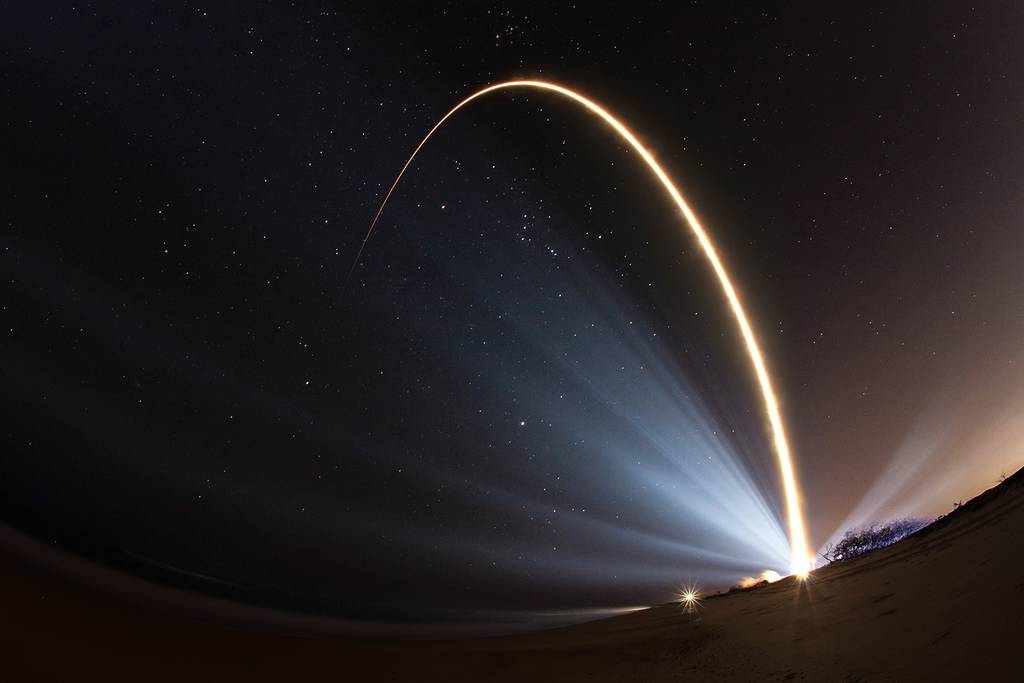WASHINGTON — The U.S. Space Force said it needs nearly $16 billion over five years to keep building a new class of satellites that can track missiles moving at hypersonic speeds, more than twice the previous forecast.
When service leaders unveiled the Space Force’s fiscal 2024 budget request on March 13, they highlighted a $2.3 billion request for satellites that can detect and track such threats — a $1.1 billion increase over what Congress appropriated in FY23. Documents released March 20 show the service is eyeing even steeper funding increases for the effort in the coming years.
Through the Resilient Missile Warning Missile Tracking program, the Space Force is developing small satellites in orbits less than 22,000 miles above Earth that can observe enemy missiles. The service has traditionally operated them from higher altitudes, but as Russia and China develop weapons that can travel and maneuver above Mach 5 speeds, or five times the speed of sound, officials want to strengthen defenses by launching smaller satellites into more diverse orbits.
The spacecraft will eventually replace the Space-Based Infrared System in orbit today as well as the Next-Generation Overhead Persistent Infrared satellites that the service is building to provide coverage until enough Resilient Missile Warning Missile Tracking satellites are operating and can take over the mission.
Chief of Space Operations Gen. Chance Saltzman said the service’s ability to defend against threats from China and Russia will depend on how quickly it can transition to new capabilities, like the space-based missile warning and tracking satellites.
“It’s about how fast we can shift and pivot to resilient architectures that we think will support deterrence,” Saltzman said during a McAleese & Associates conference in Washington on March 15.
The FY24 budget documents, which include details on what the service expects to spend on the Resilient Missile Warning Missile Tracking program through FY28, project annual spending to grow from about $2.3 billion in FY24 to a high of more than $5 billion in FY27. The funding profile is a $9 billion increase above last year’s five-year forecast.
The majority of that budget, if approved by Congress, would support a fleet of satellites in low Earth orbit, about 1,200 miles above Earth — an effort run by the Space Development Agency. The service’s request includes $1.2 billion for the LEO satellites in FY24 and a total of $9.7 billion over the next five years.
L3Harris Technologies, Northrop Grumman, Raytheon Technologies and SpaceX are all contracted to build the satellites, which will make up what the agency calls its Tracking Layer. The agency is scheduled to launch the first spacecraft at the end of March and plans to field new satellites every two years.
The Space Force is requesting $538 million for the program’s medium-Earth orbit satellites — which will reside between LEO and geosynchronous orbit— in FY24, and wants $3.5 billion through FY28. Space Systems Command is working with Raytheon and Boeing’s Millennium Space Systems to develop them.
The budget also proposes $505 million in FY24 for the ground system that will operate the satellites. The service expects to spend about $2.8 billion on this segment over the next five years.
Courtney Albon is C4ISRNET’s space and emerging technology reporter. She has covered the U.S. military since 2012, with a focus on the Air Force and Space Force. She has reported on some of the Defense Department’s most significant acquisition, budget and policy challenges.








